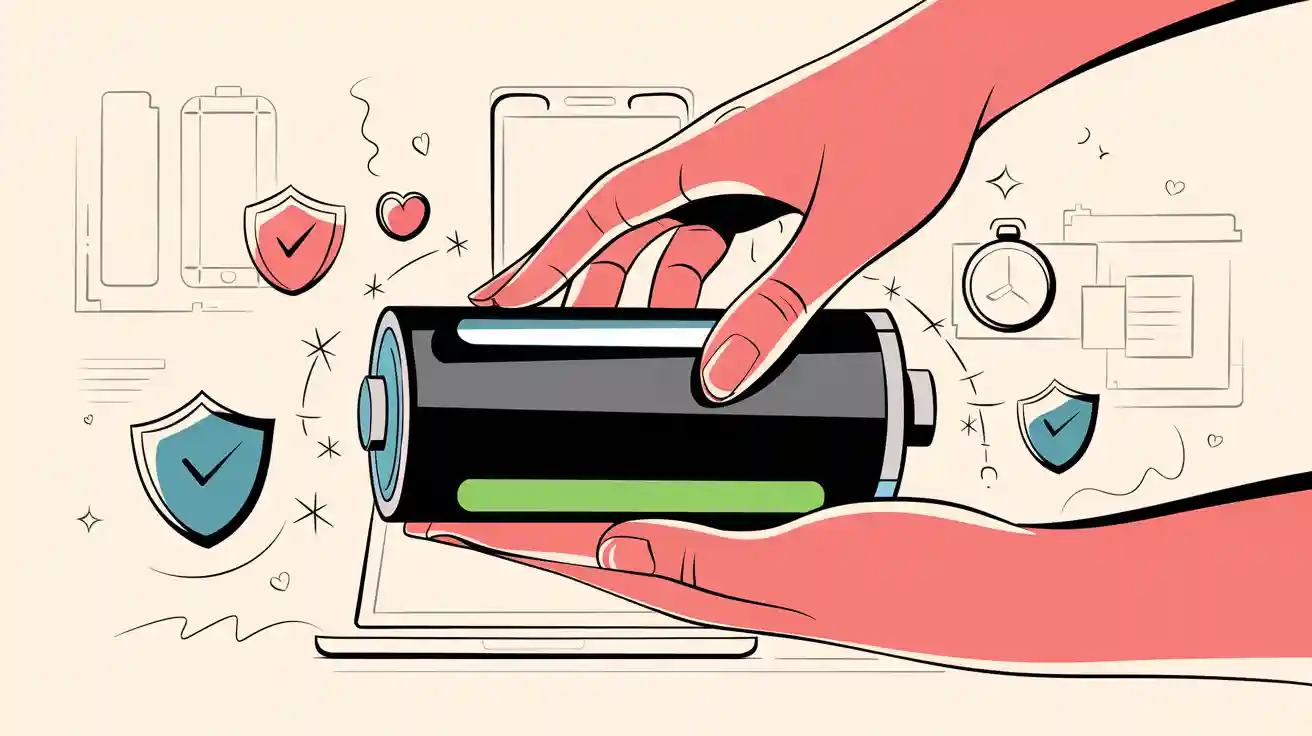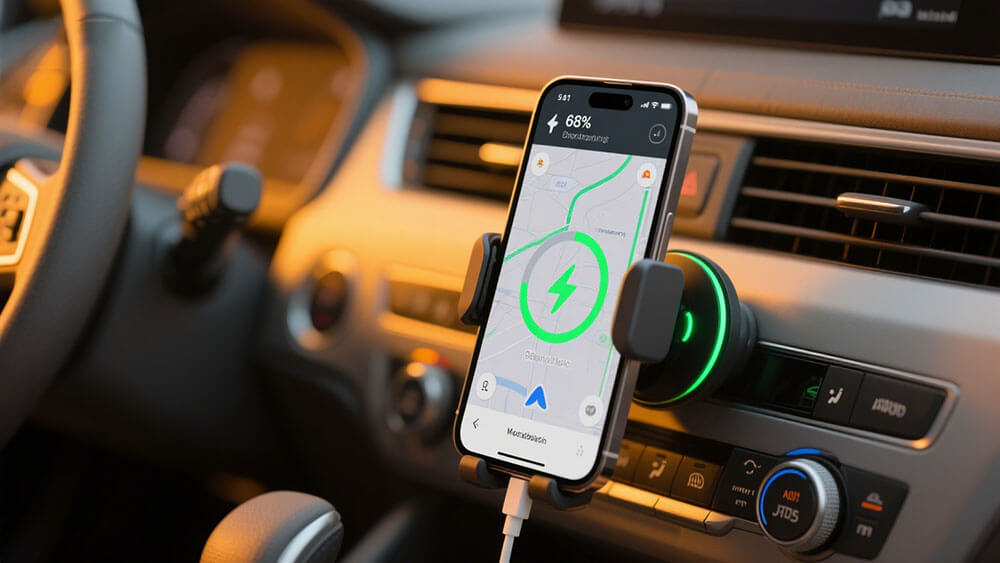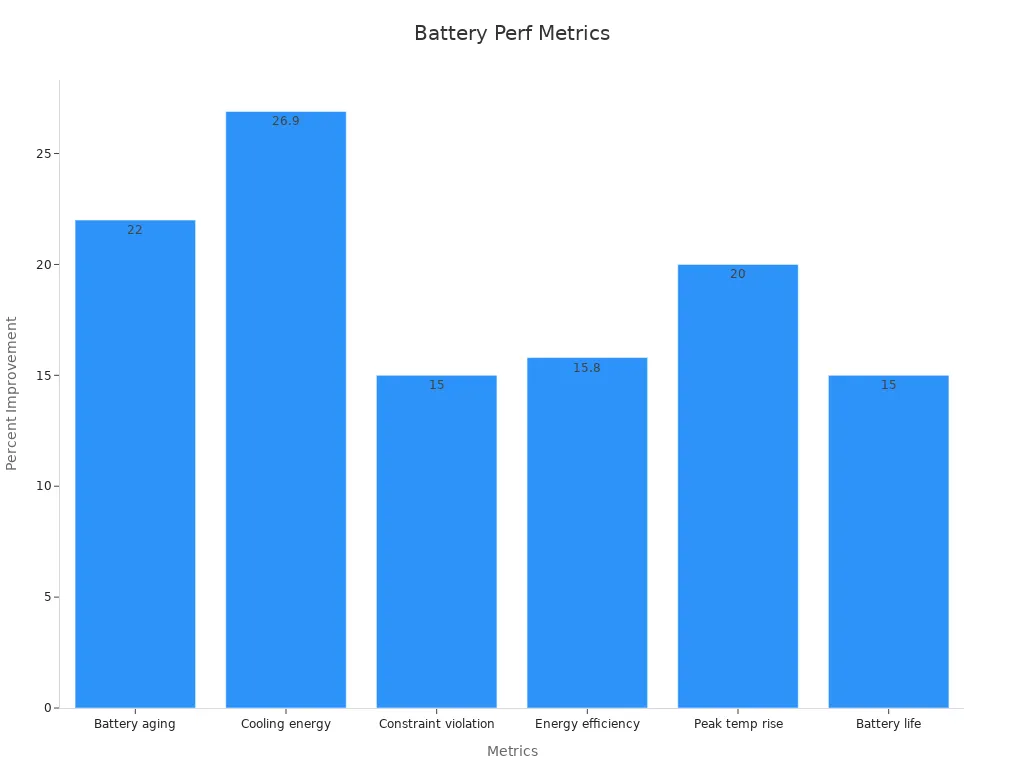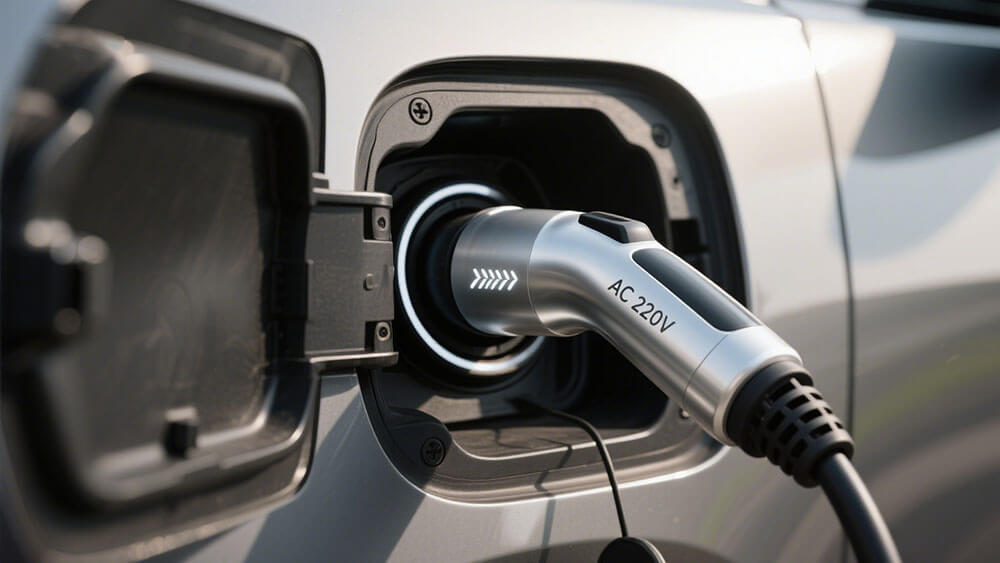
You can learn how to prolong lithium-based batteries by adopting essential daily habits. Maintain optimal charging by keeping the battery charge between 20% and 80%. Avoid full discharges, high temperatures, and overheating. Store batteries in cool, dry areas. Consistent battery care is key to maximizing battery longevity, prolonging battery life, and increasing the life expectancy of every lithium-ion battery pack.
Key Takeaways
Keep your battery charge between 20% and 80% to reduce wear and extend its life.
Store batteries in cool, dry places and avoid high temperatures to prevent damage.
Regularly check battery health and use battery management systems to catch problems early and keep batteries safe.
Part 1: Key Habits for Lithium-based Batteries

1.1 Charging Habits
You can significantly extend battery life by adopting optimal charging habits. For lithium-based batteries, keep the charge level between 20% and 80%. Avoid full discharges and overcharging. These practices reduce chemical stress and slow down capacity fading, which directly impacts the cycle life of each lithium-ion battery pack.
Experimental studies on LiFePO4 Lithium battery packs show that optimized charging protocols, such as Constant Current–Constant Voltage with Negative Pulse (CC–CVNP), reduce capacity fading and lower resistance. These methods statistically validate that proper charging slows battery aging and extends cycle life compared to conventional methods.
Statistical models confirm that uniform charging and management practices maximize reliability and prolong battery life. You should always follow manufacturer charging instructions and use chargers designed for your specific battery chemistry.
Tip: Charge your battery in a cool environment and remove protective cases if you notice overheating during charging. Allow the battery to cool between charging sessions to prevent thermal stress.
Charging Practice | Impact on Battery Life | Recommendation |
|---|---|---|
20-80% Charge Rule | Extends cycle life | Maintain charge within this range |
Avoid Full Discharge | Reduces degradation | Recharge before dropping below 20% |
Avoid 100% Charge | Minimizes chemical stress | Unplug at 80-90% when possible |
Use Manufacturer’s Charger | Ensures optimal charging | Always use recommended chargers |
Charge in Cool Environment | Prevents overheating | Avoid charging in hot locations |
1.2 Temperature Control
Temperature management plays a critical role in battery life and longevity. High temperatures accelerate chemical reactions that degrade lithium-ion battery cells, while low temperatures reduce efficiency.
NREL research demonstrates that health-aware control algorithms, which maintain precise temperature regulation, optimize battery performance and extend lifespan. Cooling systems that keep battery temperature stable slow down degradation and prevent thermal runaway.
The following table summarizes key performance metrics that improve with effective temperature control:
Performance Metric | Improvement / Value | Description / Impact |
|---|---|---|
Battery aging rate reduction | Slower degradation due to temperature control | |
Temperature fluctuation range | 0.031 to 0.040 K | Narrow variation reduces stress on battery cells |
Cooling energy consumption reduction | Up to 26.9% | Efficient cooling lowers energy use |
Constraint violations reduction | 15% | Fewer operational limits exceeded, improving reliability |
Energy efficiency improvement | Up to 15.8% | Better thermal management improves energy use |
Peak battery temperature rise reduction | 20% | Lower peak temperatures reduce thermal stress |
Equivalent battery life extension | 15% | Direct extension of usable lifespan |
Temperature uniformity | Within 1.03 to 1.33 K | Reduces uneven aging across cells |

Note: For battery packs in industrial, infrastructure, and medical applications, precise temperature control is essential for safety and reliability. Learn more about sustainable battery practices in our sustainability approach.
1.3 Storage Practices
Proper storage practices directly affect the cycle life and reliability of lithium-based batteries. You should avoid storing batteries in extreme temperatures, both hot and cold, to prevent accelerated degradation.
Store batteries partially charged, ideally between 40% and 80%, to minimize capacity fade and irreversible damage. Unplug devices once fully charged and avoid overcharging.
Recharge batteries every few months during long storage periods to maintain optimal state-of-health. Keep batteries in a cool, dry place away from direct sunlight to slow down degradation.
Avoid habitual complete depletion; partial discharges with regular recharges extend cycle life.
Proper maintenance and storage can extend lithium-ion battery lifespan from the typical 500–2,000 charge cycles to several years of reliable use.
Tip: For battery packs used in robotics, security systems, or consumer electronics, always check storage recommendations in the product manual. For custom storage solutions, consult our OEM/ODM experts.
1.4 Routine Maintenance
Routine maintenance and regular battery health checks are essential for maximizing battery life, safety, and performance.
Monitor battery internal resistance and perform capacity tests to detect early degradation. Automated resistance tests reduce manual labor and exposure to high voltages, improving safety.
Routine monitoring prevents abrupt failures and reduces maintenance time. Monitoring also alerts you to out-of-tolerance conditions related to temperature, cycling, and float voltage.
Proper battery maintenance maximizes lifespan, safety, and performance through correct charging, temperature management, and regular health checks.
Routine inspections detect early signs of degradation, such as swelling or leaks, enabling timely intervention.
Avoid full charges and full discharges by maintaining charge between 20% and 80-90% to reduce chemical stress and prolong cycle life.
Store lithium-ion batteries at 40-60% charge in cool, dry places and check charge status every 3-6 months to reduce capacity loss.
Battery Management Systems (BMS) monitor voltage, temperature, and charge cycles to prevent overcharge, overdischarge, and overheating, preserving battery health and safety. Learn more about BMS in our detailed guide.
🛠️ Pro Tip: Schedule regular battery care and maintenance checks for all battery packs in your operations. This habit will help you avoid costly downtime and extend the cycle life of your lithium-ion battery assets.
Part 2: Advanced Lithium-ion Battery Tips

2.1 Battery Management Systems
You can maximize battery life by using advanced battery management systems (BMS). These systems monitor key health indicators like capacity decay, voltage variance, and temperature changes. Sensors collect real-time data, and algorithms analyze this information to estimate the state of health (SOH) and predict remaining useful life. This approach allows you to schedule maintenance before failures occur, reducing downtime and extending cycle life.
Recent reviews highlight breakthroughs in lithium-ion battery technology, such as silicon-based anodes and solid-state electrolytes, which push cycle life beyond 5,000 cycles. Advanced BMS algorithms play a critical role in managing these innovations, ensuring safety, efficiency, and longevity.
Tip: Integrate IoT-enabled BMS for real-time monitoring and predictive maintenance to further extend battery life in industrial and infrastructure applications.
2.2 Device-Specific Advice
You should tailor your battery management strategies to each device type. For electric vehicles (EVs), advanced BMS and cooling systems regulate charging and temperature, resulting in longer battery life. EV batteries often last over 100,000 miles, with degradation rates as low as 2.3% per year.
For laptops and mobile devices, follow manufacturer guidelines, keep software updated, and avoid extreme temperatures. While EVs benefit most from advanced management, you can still extend cycle life in other devices by maintaining moderate charge levels and avoiding full discharges.
Device Type | Key Battery Management Tips | Expected Impact on Life |
|---|---|---|
Electric Vehicle | Use BMS, liquid cooling, avoid frequent fast charge | 8-10 years, low degradation |
Laptop | Update software, avoid heat, partial charge cycles | 2-5 years, moderate degradation |
Mobile Device | Avoid full discharge, use quality charger | 2-4 years, moderate degradation |
2.3 Quality Chargers
You should always use quality chargers to protect battery life. Studies show that frequent use of fast charging can reduce battery capacity by 3% to 6% after 50,000 miles in EVs. Automakers recommend limiting fast charging to preserve cycle life.
The table below compares the impact of charging methods:
Charging Method | Impact on Battery Life | Recommendation |
|---|---|---|
Level 1/2 Charger | Maintains integrity | Use for daily charging |
Fast Charger (DC) | Slightly faster degradation | Limit to occasional use |
⚡ Note: Use manufacturer-approved chargers for all lithium-ion battery packs to ensure optimal performance and safety.
You can maximize battery life and cycle life by following proven battery maintenance routines. Consistent battery care, optimal charging, and temperature control directly improve battery life, cycle life, and battery safety.
Regular battery inspections, BMS monitoring, and proper storage extend battery life, cycle life, and battery reliability.
Quick-Reference Checklist for Battery Life and Cycle Life:
Keep battery charge between 20% and 80% for longer battery life and cycle life.
Avoid deep discharges to protect battery life and cycle life.
Use BMS for battery life and cycle life optimization.
Store battery packs in cool, dry places to maintain battery life and cycle life.
Schedule battery maintenance to ensure battery life and cycle life.
You will see improved battery life, longer cycle life, and reduced downtime. Implement these battery life strategies to boost battery pack performance and cycle life in your operations.
FAQ
1. How can you optimize charging habits for lithium-based batteries in industrial applications?
You should maintain charge between 20% and 80%. Avoid full discharges and high temperatures. Use manufacturer-approved chargers for every lithium-ion battery pack to prolong battery life.
2. What routine maintenance steps help maximize battery longevity and cycle life?
Schedule regular battery care checks. Monitor internal resistance and temperature. Use battery management systems for early detection of overheating or degradation in lithium-based batteries.
3. Why should you choose Large Power for custom battery solutions?
Large Power provides tailored battery management, advanced maintenance support, and consulting for industrial battery packs. Request a custom solution here.




